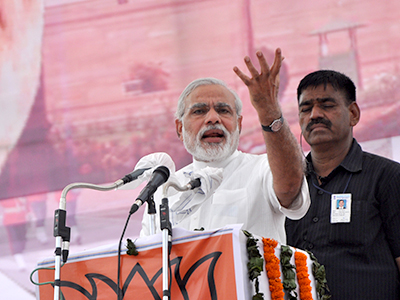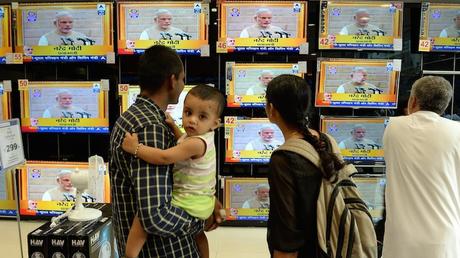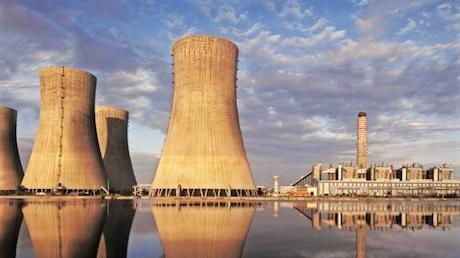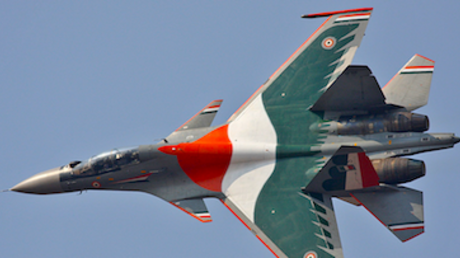As chief minister of Gujarat, Narendra Modi has had an unusually busy external relations portfolio in comparison to leaders of other state governments. He has travelled abroad frequently and made Gujarat a key business partner for a host of countries. This has given him a richer foreign policy experience than most peers.
It has also given him opinions on priorities of Indian diplomacy.
In his pre-election speeches, for instance, he has made the point that a synergy of trade and traditional foreign policy issues is now staring India in the face. Modi is not the first politician to accept this. The question is: if he does get the mandate, will he use his political capital to re-order institutional structures to catch up with current realities? Will he for instance take on entrenched turf warriors and push for a merger of the Commerce Ministry and the Ministry of External Affairs, and mirror Australia’s Department of Foreign Affairs and Trade?
That apart, Modi has made a case for delegating foreign policy to the states. Seen in isolation, this seems puzzling. However, it needs to be linked to Modi’s thrust on domestic prosperity and its inevitable repercussions on economic diplomacy. Here, the examples of border provinces such as Gujarat and Punjab may have been on his mind.
Addressing Pakistan at a Rewari (Haryana) public meeting, Modi said if terrorism and cross-border violence were to be curtailed the two countries could benefit from a sort of peace dividend. He was re-stating an obvious but under-articulated Indian strategic bet of the past 15 odd years: as India’s economy grows, nations that neighbour India will find it increasingly useful to plug into the Indian system than to fight it. South Asian economic unity is unlikely to be a one-shot, big-bang process. It is going to be incremental and the role of border provinces will be crucial. The emphasis by Modi’s close friend, Chief Minister Parkash Singh, on the need for greater commerce between Indian and Pakistani Punjabs can be read as a template for pushing to the states what New Delhi may not want, or be able, to do.
It is here that Modi’s years as a chief minister may make him more open to giving states a stake in foreign policy shaping. Other than neighbouring countries, any future Indian government’s principal focus will be on the vast swathe of territory and people that begins in Sri Lanka and ends in Sydney, and can be described under a variety of rubrics: Look East, Indian Ocean Region, the Indo-Pacific. Countries such as Japan, Indonesia, Singapore and Australia present India big windows of opportunity as it strives to become an economic and maritime power.
Modi understands this region well. One of his earliest chief ministerial visits was to Singapore. Goh Chok Tong, Singapore’s former prime minister, is a confidant and mentor figure. Japanese investment and technology will be instrumental if India is to become a manufacturing economy. Gujarat, the rare Indian state with a manufacturing story to tell, is almost a strategic partner of Japan and that country’s primary investment destination in India. Modi’s visit to Japan in 2012 was very successful but it was his trip to China the previous year that first suggested a change in how big powers were viewing him. Senior Indian political visitors to China meet one or two Communist Party politburo members. Modi met four, in Beijing and in the provinces. In a highly sympolic act, the Chinese gave him a bulletproof motorcade and motorcycle outriders, previously granted only to India’s president and prime minister. They were conveying a message.

The elephant in the room – or studiously outside the room – is the United States. The decision to revoke Modi’s visa in 2005 and boycott him ended a few weeks ago when the outgoing American ambassador travelled to Gandhinagar with an olive branch. Unfortunately, everybody else – including Australia and the European Union – had long made their peace with Modi. The United States gained nothing from being the last mover.
That apart, strategic differences between the foreign policy establishment in New Delhi and the Obama administration - especially in regard to the increasingly invisible Asian pivot and post-2014 Afghanistan - are problems Modi will inherit. Further, there is the burden of a trade and intellectual-property war between India and the United States. It has been politically mismanaged in both capitals, and Modi cannot possibly have a magic wand.
At best, Modi can focus on the economy, build a stronger constituency in American business, sit out the remaining Obama years – and wait for a new president in Washington, DC.





